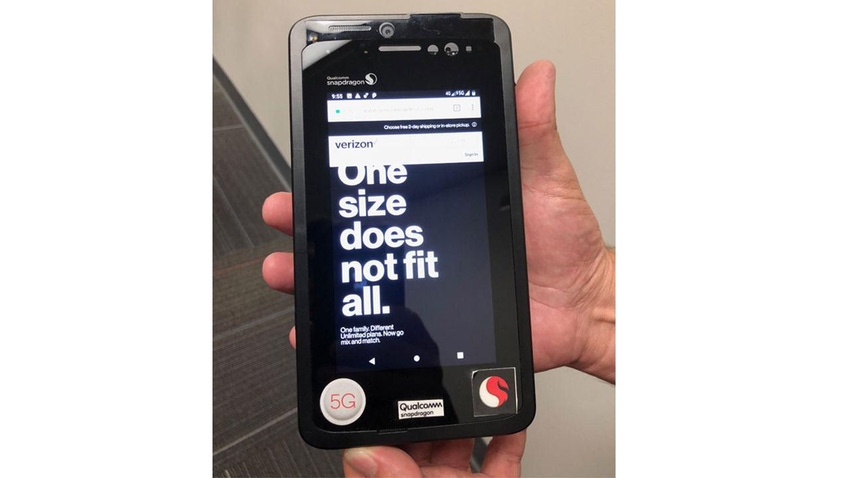US carriers AT&T and Verizon have completed what they both claim to be the world’s first data transfer to a smartphone form factor device over mmWave 5G live networks.
September 11, 2018

US carriers AT&T and Verizon have completed what they both claim to be the world’s first data transfer to a smartphone form factor device over mmWave 5G live networks.
If we put together all the 5G ‘firsts’ claimed by the industry players it would make a long read, especially if we included cases where similar firsts have been claimed by different companies. In this most recent case, both AT&T and Verizon called themselves the world’s first to successfully transfer data over live 5G networks to purpose-built mobile devices, in Texas and Minnesota respectively.
Temporally, AT&T might have stolen a step ahead of its competitor. The AT&T test took place “over the weekend”, while news coming out of Verizon on Monday declared the success happened yesterday, but they were essentially the same kind of tests. Probably the most intriguing part of the story is that both carriers used Qualcomm’s terminals on networks supplied by Ericsson.
Even the technical details disclosed look very similar. Both tests were using smartphone form factor test devices from Qualcomm integrating the latter’s Snapdragon X50 5G modem and RF subsystem (see the picture), both were going through Ericsson 5G-NR capable radios connected to 3x virtual core networks.
These announcements followed hot on the heels of a couple of other 5G firsts in the last few days: last week Verizon and Nokia claimed to have completed the first over-the-air data transmission on a commercial 5G NR network in Washington DC, though the receiving end was not exactly a smartphone-like device. On Monday Nokia announced its demo with Sprint to conduct the first (in the US though) 5G NR connection over Massive MIMO.
Ericsson and Qualcomm claimed to have completed the first 5G NR ‘call’ to a smartphone-like device (which was pretty similar to the ones used in the AT&T and Verizon tests). That announcement itself came a couple of days after Ericsson announced another similar test with Intel. These two slightly earlier tests were conducted in lab environment while the latest AT&T and Verizon cases were done over live networks, or as AT&T emphatically stressed, “Not a lab. Not preproduction hardware. Not emulators.”
We understand the marketing departments of these companies must be busy generating as big a buzz as possible in the run-up to the Mobile World Congress America (starting tomorrow). Meanwhile we cannot discount that tests and announcements (and claims) like these do show the wider world 5G potentials when the commercial networks roll out in the coming months and years, though at the moment all these firsts still do not mean anything for consumers as no 5G terminals are available yet.
Another interesting angle to look at these tests is how active the US carriers are in pushing ahead 5G on mmWave, which contrast with how slow the European operators and regulators are moving. The European Commission launched a project to look into the feasibility of using mmWave for 5G deployment in the EU. A reporting session was organised in Brussels in June this year. The views were divided, and conclusions elusive. The main doubt from the industry looked to be the lack of compelling business case and the wrangling between the telecom industry and the satellite industry on the utilisation of the lower mmWave spectrum, hence the lack of contiguous bands for 5G buildout.
It may be a worthy reminder that we can never tell with full confidence what new technologies can do. Andre Fuetsch, AT&T Communications’ CTO was bang on when he said “… yet to be discovered experiences will grow up on tomorrow’s 5G networks. Much like 4G introduced the world to the gig economy, mobile 5G will jumpstart the next wave of unforeseen innovation.”
About the Author(s)
You May Also Like








.png?width=300&auto=webp&quality=80&disable=upscale)


_1.jpg?width=300&auto=webp&quality=80&disable=upscale)


.png?width=800&auto=webp&quality=80&disable=upscale)